35th Annual
National Narrow Gauge Convention
Sept. 2nd-5th,
2015
in Houston, Texas
Clinics to be Presented
as of August 12th, 2015
Some changes possible - final list at the event.
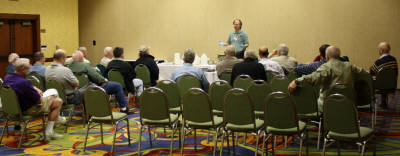
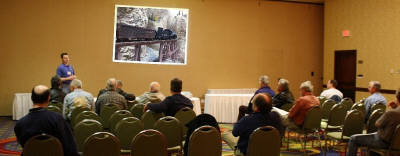
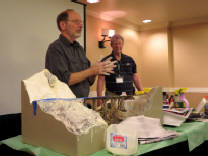
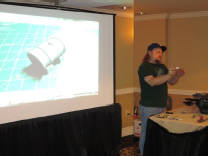
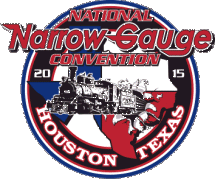
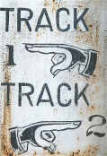
This is the final update on-line of Clinics. We are going to press! Any last minute changes will be posted at the event.
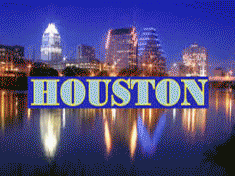
|
3D CAD and 3D Printing |
Paul Cesak |
|
|
|
3D Printing seems to be showing up everywhere today. Some say it will be the next industrial revolution. Some say it will change manufacturing forever. Some say it will revolutionize medicine and change the way our doctors look at surgery. It can also be used in model railroading and many people have already started using 3D printing to make everything from complete structures to barrels, junk, window frames, and even a personal figure of yourself…even in HO scale. I personally have used 3D printing to build a narrow gauge boxcar frame for the Pagosa Creek Timber Company. www.pctcrr.com In this clinic, we will discuss what it takes to get started in 3D printing and why 3D CAD is also a very big part of 3D printing. We will discuss the pitfalls and what everyone needs to know before they decide on this path. It can be an amazing journey into the world of 3D design. I personally own and moderate the 3D Printing group on LinkedIn (27,000+ members) and work with the largest 3D Printing Bureau in Houston. We will have lots of items to show. |
|
|
A Month in the Life of Superintendent C.B. Carpenter, RGS |
Patrick Student |
|
|
|
This clinic is based on the discovery of some 500 or so telegrams held by the Colorado Railroad Museum that were sent by or to C. B. Carpenter in June 1923 providing insight into the operation of the RGS. Topics range from daily situation reports, overtime reports, personnel issues, pass requests, material requisitions and more. |
|
|
Aging and Weathering Brick Walls |
Bob Brendle AIA |
|
|
|
Modelers are fortunate to have an abundance of “brick” structures available from Walthers, Design Preservation, Kibri, Heljan, and Revell. Based on his article “Brick Walls with Character” in the July 2000 Railroad Model Craftsman, Bob will show his easy 4 step watercolor painting and weathering technique that transforms a kits’ plastic sheet walls into a most realistic representation of a richly weathered and aged brick surface. If you want to learn how to give your structures more realism and character, this is the clinic for you. |
|
|
Black Canyon of the Gunnison |
Terry Wheeler |
|
|
|
In the formative years of my life I was surrounded by railroaders and their railroads. This clinic is the tale about growing up in this environment and of two of these men in particular, one who created in me a desire to never stop learning about the narrow gauge and the other who taught me never stop learning about life. A major portion of the clinic will deal with the history of the Black Canyon and the railroad that ran through it. In order to keep things organized I have divided it into two chapters, three if you count the introduction. The Introduction covers a brief history of the area. In chapter one we take a mile by mile journey through the Black Canyon from the east end of Sapinero to the west end of Cimarron in Colorado as it was in 1919. Chapter two is a story that in many ways shaped my life and one I am sure you will find surprising, maybe even a little amazing and certainly unique. |
|
|
Braking, Switching, and Running… railroading with Tsunami Technology |
Jarrette Ireland |
|
|
|
From auto-synchronizing exhaust to full train line braking, learn how the newest Tsunami Digital Sound Decoder technology from SoundTraxx can enhance how you run your railroad. SoundTraxx Sales Manager Jarrette Ireland will use prototypical scenarios to demonstrate the many features built into these advance decoders for locomotives and rolling stock. He will also showcase the Steam, Diesel, and SoundCar and the new Intelligent Consisting feature, which makes consisting a breeze with the wave of a magnet. Be ready to learn how to bring new dimensions and realism to your operating session! |
|
|
Building a small bridge |
Rick Hunter |
|
|
|
Come and join Maureen and Rick, of Hunterline, as they take you through, step by step, to build Hunterline's 30' King Post Truss Bridge in N, HO, S, or O, including all the Narrow Gauge scales. Skills to learn; read templates and instructions, distress wood, staining and gluing techniques, assembly, drilling for rods, NBW installing, finish weathering techniques. This is a beginner to intermediate difficulty, but old pros can learn a few things too. Includes the kit and two bottles (8oz.) of our Weathering Mix - a base color and our Creosote Black as a highlight color. Tool list is below. This will be a 3-4 Hour clinic on Thursday afternoon. There will be breaks at certain times to allow for drying time. Fee: The fees involved will be: N scale $35.00, HO scale $37.00, S/On30 scale $40.00, O scale $45.00 Tools: Leftover dish, cup or can for stain. Wood glue - fast tacking carpenters glue shcu as Elmers or La Pages, masking tape, wax paper, pin vice, razor saw and/or X-acto knife, tweezers, rire snips, small files, clamps and brushes, (cheap). Patience. ~ This is a pre-registration clinic . Please email rick@hunterline.com and register your ‘Name’, ‘Scale’ and ~ and the ‘T wo Colors’ of Weathering Mix you wish - a base color and a highlight color (see our website catalogue) ~ i.e. Driftwood base with a Creosote Black highlight. We take Paypal, Visa or Mastercard. |
|
|
Building Colorado Scenery, Part 2 |
Kenneth Ehlers |
|
|
|
In Kansas City, I showed how to do hard shell, plaster castings, and touched on ground cover and building various types of trees – mostly things that all good narrow gauge modelers know how to do very well. After a quick review, this clinic will begin where that left off. I will focus on adding the numerous small details and finishing touches that bring a scene to life – the tricks that will make your scenery wow your fellow modelers. The clinic will be mostly a live demo but will also include recent layout photos that illustrate the techniques demonstrated. |
|
|
Building the Elk Canyon & Western Railroad |
Marc LaChey |
|
|
|
The EC&W RR is the third layout built by the North Texas Narrow Gauge group located in metro Dallas, Texas. Come and see Marc’s presentation as he describes how the group constructed the EC&W RR. Hear how the group went through the design process learning from mistakes made building their first two layouts. Marc will discuss the constraints the group imposed on the design that allowed a small group of modelers to build a layout they could manage. Marc will also talk about several key inspirations for the layout and source of ideas for the actual construction of the EC&W RR. Once you see the Elk Canyon & Western RR on display during the convention, you will want to attend this clinic to learn how it was done! |
|
|
Casting and Carving Stone Structures |
Steve Harris |
|
|
|
Steve will give a preview of his article in the September/October issue of the Gazette, in which he shows how he casts and carves structures out of Hydrocal. He will cover everything from making the molds to coloring and weathering the model. He will cover mistakes made as well as some innovations that may be new, and provide answers to questions such as: How are door and window openings made? What to do about corners? And how about window sills? |
|
|
Casting Parts in Urethane |
Barry Bogs, MMR |
|
|
|
Making urethane castings by Barry Bogs MMR. This clinic and handout will cover, materials and equipment needed to make and use urethane castings. We will start by discussing the making of masters to mold, mold boxes, pouring rubber, removing the masters from the molds, pouring the urethane in the molds, prepping the castings for use and gluing them together. Other tips that I have learned along the way will also be covered. This clinic is not scale specific. Questions are encouraged and welcomed. |
|
|
Crowell Spencer, Long Leaf sawmill and Red River & Gulf Railroad |
Everett Lueck |
|
|
|
From 1893 to 1954, the Crowell Family operated three Louisiana lumber companies, established 3 sawmill towns, and 5 permanent lumbering camps, connecting them all with a network of logging railroads and the common carrier Red River and Gulf Railroad. Operating the Long Leaf mill again from 1957 to 1969, the family preserved the mill and its important structures and equipment to be of transformed into the Southern Forest Heritage Museum in 1994. This is a pictorial summary of 76 years of a single family’s lumbering history, featuring its mills, railroads, equipment and people, along with an overview of todays’ Southern Forest Heritage Museum. |
|
|
Colorado & Southern RR |
Rodney Guggenheim |
|
|
|
This is what the late Bruce Maxwell presented at the narrow gauge convention in Portland Maine, I knew him as I had bought a lot of his stuff on the RHS and was lucky when I ask him how can I get a copy of it. Well lucky me I had a laptop because he ask me if I had a Laptop? Yes I said and Bruce pulled out a USB flash Drive. This clinic will be in color power point presentation of the lines of the C&S including Scraping Operations. |
|
|
Everything Diorama |
Mike Engler |
|
|
|
This clinic will show you how to research, plan, strategize, and construct contest quality dioramas. Building techniques and tips for the structures, scenery, and details, and how the model is made interesting and is brought to life with “mini-scenes’. Super-detailing the diorama using the methodology of the masters, and how and where to find it. |
|
|
D&RGW K-36s - the work horses of the Rio Grande and soon your HOn3 layout! |
Jarrette Ireland |
|
|
|
Join Jarrette Ireland of Blackstone Models on an in depth look at some of the most iconic locomotives ever used in the mountains of Colorado. The clinic will cover a historic overview of the K-36 class of locomotive from delivery through today. Including different paint schemes and mechanical changes to the locomotives. Next the clinic will showcase a review of the versions coming from Blackstone models. This is a great clinic for anyone who is passionate about HOn3 or the D&RGW to attend! |
|
|
DCC: Why, How, Cost, Choices & Rewards |
Tom O’Hara |
|
|
|
A lot of people have gotten on the DCC bandwagon. Why would you want to join them? How would you get started, and how much would it (realistically) cost? How much effort would it cost you, and how long would it take to get going? Do you want/need all the “bells and whistles”? Is sound necessary? What does it take to modify your engines? Do you do-it-yourself or go for help? What do engine installations involve, and what would they cost? Is the whole DCC thing worth the effort? Let’s toss out some information and opinions that would help you decide to get started or improve what you already have. |
|
|
Dead Rail – Battery Powered Radio Control for smaller scale model trains |
Pete Steinmetz |
|
|
|
Members of the Dead Rail Society will be discussing all aspects of operating trains with battery power and radio control. We are not scale specific, but will concentrate on O Scale down to N Scale. We will discuss locomotive conversions, sound or no sound, choice of equipment and components, companies that supply parts used in Dead Rail, companies that do conversions, batteries and charging, and safety concerns. This will be an interactive discussion. If we go over the allotted time, we will continue our discussion at the bar . |
|
|
Geodesic Foam Scenery and Water Modeling |
Joel Bragdon |
|
|
|
This is a ‘TWO HOUR’ clinic. An in depth and comprehensive look at all aspects of building mountain scenery and water from resin materials. A mountain railroad diorama will be built during the clinic from the bench-work up. Foam bench-work and roadbed, foam hard-shell and resin/foam rock casting will be demonstrated. Also, realistic coloring of rocks and scenery plus final detailing will be covered. Also demonstrated will be a variety of methods and resin materials for modeling, detailing and coloring very realistic calm water, rapids and waterfalls. |
|
|
Gilpin Tram |
Lind Wickersham & Keith Pashina |
|
|
|
Part 1: Brief history and overview of the Gilpin Tram, including photos then and now. Overview of Gilpin Tram books and publications. Summary of commercially produced locomotives, rolling stock and structures. Part 2: Discussion of modeling technics. Modifying and detailing commercial kits to fit the Tram. Modeling specific structures and scenes. |
|
|
Hand Laying Turnouts |
Randy Meyer, MMR |
|
|
|
Hand laying turnouts can be a rewarding project for your railroad. You get to fit the turnout to the space and track configuration that you want and is not determined by the geometry of commercial turnouts. I do not depend on a lot of measuring to build my turnouts. I just use three point gauges and a standards gauge to lay things to fit. I will demonstrate the steps that I use to put together the turnout . |
|
|
|
|
|
|
History of the Galloping Goose Historical Society |
Rodney Guggenheim |
|
|
|
The clinic is about the Dolores Co GGHS from the founding to Current will cover the history of the GGHS the restoration of Goose #5 and the rebuilding of the depot done in power point presentation.
|
|
|
Inland Waterways Ideas |
Andy Small |
|
|
|
A photographic look at watercraft associated with the inland waterways of North America, This is a study of these commercial craft, where vessel draft and environment both greatly impacted their design and employment on our rivers and lakes. The history of North America's inland waterways are tied directly to the history and development of rail service. The clinic will cover the steam powered stern wheel towboats that plied the Western rivers, the rafters that moved timber, and the Pacific Northwest steamers that were the lifeblood of that region. The clinic will also look at the dredges that cut the massive irrigation ditches throughout the plains, the rail transfers, the wharf boats that were the local communities' piers and storehouses, the shipways used in the winter months, the local ferries (steam, gas and horse powered) that connected communities, and the small amphibious "Alligator" warping tugs that were the mainstay of Canadian logging industry. Attendees will receive online resources, list of print references, CD-ROM with photograph subjects, an opportunity to look through the presenter’s extensive reference collection, sample models, and maybe some new and creative modeling ideas. |
|
|
Introduction to Model Railroad Operations |
Steve Benezra |
|
|
|
This clinic will present an introduction to model railroad operations from layout design to running your first op session. Railroad operations are usually era specific since the time frame of your model railroad often dictates not only rolling stock and motive power but also the method of moving trains safely over the railroad. That being said era specific dispatching methods will be described. Since the heart of model railroad operations is moving freight and passengers from one specific location to another, various forms of car forwarding will be discussed. Narrow gauge operations are unique in that they are “closed” systems and their operations are unique but not unlike general railroad operations. The similarities and differences between narrow gauge and standard gauge operations will be discussed as well. |
|
|
Locomotive Care and Repair |
Tom O’Hara |
|
|
|
Almost every loco needs attention at one time or another. The 50-year-old Shay that comes out of the Dad’s closet may need a new motor, gears, or wiring. The 25-year-old “mint” rod engine that has never been run may have gear grind in just one direction or a loose solder joint or two. Some brand new engines still have their showroom shine and need weathering or a minor cosmetic touch-up. Any of these may have an owner who is switching to DCC and needs some help getting there. This clinic is about finding and fixing mechanical, electrical and cosmetic problems. There will even be a little dose of DCC for those who would like some pointers in that area. A number of general diagnostic techniques will be offered as well as some very specific solutions. Not every question can be answered, but as many as possible will be. If you would like to get primed on the topics and the presenter, you can visit the website: drtomslococare.com |
|
|
Louisiana Sugar Cane Railroads – 1897 to 1970 |
Phil Stewart |
|
|
|
The clinic features over a 100 vintage photographs of Louisiana sugar cane plantations, motive power of the large plantations, video of the processing of sugar cane, a history of the sugar cane production and the growth of plantation railroads. The clinic also discusses how to convert this information into a working model railroad and suggested operation sessions. I also discuss scenery techniques from Louisiana bayous, swamps and plantations and feature a segment on “Where are they Now,” discussing the location of the locomotives still in operation. |
|
|
Modeling Adobe Buildings in the Southwest |
Lane Stewart |
|
|
|
Lane has built adobe buildings in just about every scale from N to Half Inch and has found techniques and materials suitable for modeling in each scale. The presentation will include a few of his photographs of southwestern adobe buildings under construction and in various states of decay. And for show-and-tell, he will bring a couple of old adobe bricks. |
|
|
Modeling Victorian Era Structures |
Duncan Harvey |
|
|
|
Given that most of us are modeling narrow gauge railroads and that such railroads usually had their origins in the late 1800's, it stands to reason there will be many structures from the Victorian era on our layouts, even if those layouts depict the more recent years of the mid 1900's. Consequently, knowledge of Victorian color pallets, interior decorations and details, exterior structural elements and how to model them can prove most useful. This clinic is designed to give some of that information. While discussing these various items we will consider different ways to model them, from straight forward purchase of such detail items, to utilizing items from other scales, scratch building items, modifying an item from one use to another, looking for and finding details in unusual places. We'll suggest color schemes and the uses of some of the unusual items. Included will be discussion of sources to obtain needed information to replicate these items. |
|
|
Modifying Photos with Gimp |
Blake Bogs |
|
|
|
Blake will be presenting a clinic on how to modify photos. He will be using Gimp instead of Photoshop. This program has all the bells and whistles of Photoshop, but is absolutely free. In this clinic, Blake will attempt to show you how to make a poor photo into one of the best you have ever seen. You will also learn how to make a present day picture into a picture that looks like it was taken 100 years ago. To see some of Blake’s work, go to the Cumbers and Toltec’s Friends forum and look under the related railroads tab under the General Discussion Menu. In preparation for this clinic please go to http://www.gimp.org and download the program. Then try to play around with it a little bit. This is so you will have some idea about what he will be talking about during the clinic. |
|
|
Modifying Vehicles |
Duane Richardson, MMR |
|
|
|
Sure…you can buy a vehicle from anybody, drop it on the layout and it will look just fine. The only problem is that it will look just like everybody else’s layout. In this clinic we will talk about and demonstrate how to modify vehicles so you can have some “one of a kind cars” to set your layout apart. We will cover everything from simple things that can be done to set your cars apart. Creating open doors, hoods and trunks can make a parking lot or a road side scene look more realistic. We will also demonstrate as some major modifications (that really aren’t that hard) so you can make a scene that nobody else has. This allows you to not have the same Pickup all over the layout but allows each to be modified into something different. This clinic is for all scales and almost any era of railroad. |
|
|
Mold making and casting for the model maker |
Joel Bragdon |
|
|
|
This is a one hour clinic and will cover making a variety of types RTV rubber molds for reproducing detail parts, cars, vehicles, structures or almost anything. One piece, multi piece and split molds will be demonstrated. Casting with a variety of materials will be shown including fast curing space age, safe and odorless, polymer resins. Over two hundred sample molds and castings will be shown to illustrate the great number of options. |
|
|
Northwest Foliage |
Tom Beaton |
|
|
|
I model Western Canadian Temperate Rain Forests. I show how I do the trees, and all that grows in these forests down to the fungus's. Stumps, cut, hollow and rotten. Rotten logs, ferns, mosses and many other of the ground cover of the forest, using as much natural materials as I can. |
|
|
Operations on the Pandora & San Miguel Railway |
Kenneth Ehlers |
|
|
|
This clinic will look at how I designed and built my Sn3 Pandora & San Miguel Railway to be a functional operating model railroad that keeps four to seven operators happily occupied for a couple of fun hours. The P&SM mimics the operations of the Rio Grande Southern in 1942. I will begin with several helpful construction tips for reliable operation. Then I will discuss the paper work that I use during an operating secession including how I use a timetable, dispatcher, waybills, and switch lists to organize the operations. |
|
|
Outdoor vs. Indoor Railroading: Gee... What Scale Is It? |
Steve Blackson, MMR |
|
|
|
Come learn the differences between G-scale outdoor railroading and indoor smaller scale railroading. Did you know that in smaller scale railroading, narrow gauge equipment is 70% the size of standard gauge, but in large scale outdoor railroading, narrow gauge equipment is larger than standard gauge? How is that possible? How often do you water your scenery? How about building structures like trestles and bridges without glue, or buildings without wood? What about paint and weathering? Both indoor and outdoor railroading have locomotives, cars and couplers, track and switches, but after that, almost everything else is different! |
|
|
Painting and Weathering detail parts |
Brett Gallant |
|
|
|
Detailing Tips and Techniques w/Brett Gallant of Sierra West Scale Models - Brett shares a variety of proven detailing techniques he uses to get realism in his castings and details. You’ll learn many techniques to elevate your modeling to contest quality through the use of chalks, washes and paint. Many of our hobbies award winning modelers use these same techniques that they learned building Brett’s kits. |
|
|
Painting Locomotives |
Charles Goodrich |
|
|
|
Charles will take you through painting a brass locomotive from disassembly, cleaning, painting, weathering and detailing of a professional paint job. He will show all of the “tricks” that he has learned in painting commercially and for himself for over 25 years. The program is a slide presentation (no paint fumes allowed in building) with a question and answer period. A display of tools and custom finished locomotives will be shown to illustrate the process. |
|
|
Painless weathering |
Joel Bragdon |
|
|
|
This is a one hour clinic and will cover a broad range of weathering methods and materials including some traditional old favorites and some that are new or little known. Weathering wood, metal, plastic, paper and plaster for model cars, structures, details and scenery and much more will be demonstrated. Near the end of the clinic the attendees will be invited to try their hand with some of the materials and techniques that they have seen and leave the clinic with some samples. |
|
|
RGS Buildings and Structures |
Rodney Guggenheim |
|
|
|
This is a power point presentation of the RGS will start in Ridgway going to Durango Co by RGS with slides of the railroad from Ridgway with stops at Telluride then back on the Main to Rico , Dolores, Mancos, Hesperus, to Durango with point in-between . |
|
|
Scratch Building in 1:24 Finescale |
Casey Akin & Cody Akin |
|
|
|
In this clinic, we will explain in detail how we scratch built our award-winning 1:24 finescale locomotives and freight cars. Several techniques will be covered in this clinic including building with styrene and wood, resin and metal casting using RTV molds, laser-cutting materials, machining parts and painting and weathering. This clinic is sure to teach modelers, regardless of scale, several tips and tricks to build better models. |
|
|
Soldering a Primer |
Steve Sandifer, MMR |
|
|
|
Steve will d emonstrate various soldering techniques using soldering gun, irons, and resistance equipment. Many people are afraid to enter this area of the hobby, but it is essential for customizing brass equipment, powering track and equipment, and it is extremely useful for scenery work. Fear not - come and see soldering first hand. |
|
|
Southern Pacific Narrow Gauge |
Rodney Guggenheim |
|
|
|
This is a mile almost mile by mile of the Southern Pacific Narrow gauge from Laws to Keeler California. This is a slides Power Point presentation with both Black & white and color slides of the railroad. |
|
|
SP’s Slim Princess in the Sunset |
Joe Dale Morris |
|
|
|
This will be a Power Point presentation of photographs, charts and maps of the SPs Keeler Branch during her final 30 years of operation. The presentation will cover the motive power, facilities, industries, right ‐ of ‐ way and people that kept the Keeler Branch alive until its discontinuance and abandonment in 1960. There will also be photographs of the dieselization of the line and finally a sequence on the scrapping of the branch and the placement of the last three steam locomotives on display. It will be informal and will run for approximately 1 hour. Questions and comments will be fielded at all times during the presentation. |
|
|
Sunshine and Sugar |
David Mewes |
|
|
|
This clinic will introduce the 2 foot gauge cane railways of Queensland through a presentation of prototype images and a brief overview of the operation of these railways. Some examples of passenger trains that were operated over a couple of these railways until about 1930 will also be presented. The clinic will look at some locomotive plans and models built using these plans as well as some structures based on prototypes such as locomotive sheds. Finally the clinic will cover an excellent HO Scale exhibition layout named Wallaville which is based on a true location on the Bundaberg Sugar Company’s Bingera Mill cane railway system. This layout covers modern day operations at the Wallaville Outdepot. |
|
|
Surprise Scenes on my Glenwood & Black Creek |
Jim Vail |
|
|
|
Building new scenes in new places where they were never anticipated or planned - they just "came about" for one reason or another. |
|
|
The Ridgway Railroad Museum, Past, Present and Future |
Don Paulson |
|
|
|
The Ridgway Railroad Museum was founded in 1999 by a small group of Railfans living in Ridgway, Colorado, the birthplace of the Rio Grande Southern Railroad. Since that time we have grown to a membership of over 400. The museum’s first acquisition was Museum President Karl Schaeffer’s replica of RGS Motor No. 1 which continues to be run several times each year at the museum. The museum then purchased a series of D&RGW narrow gauge cars including drop bottom gon 702, stock car 5574, box car 3130 and water service car 04914. The museum negotiated a permanent loan of D&RGW caboose 0575 from the Ouray County Historical Society. The talk will describe how each of these cars were meticulously restored. In 2008 the Museum signed a contract with the Telluride Volunteer Fire Department to restore RGS Goose No 4. It was moved to Ridgway in 2008 and after a four-year restoration it ran at the Colorado Railroad Museum over the two-day 2012 Goosefest where it hosted over 1200 riders. It is now back in Telluride but it will run at the Durango and Silverton’s Railfest in summer 2015. The talk will also describe how we rebuilt the Guston Depot on Otto Mears’ Silverton Railroad grade, our continuing restoration of D&RG Business Car C, and our exciting plans to build a replica of Otto Mears RGS engine No. 36. The museum has also published two books, Narrow Gauge Railroading in the San Juan Triangle and The History and Restoration of RGS Galloping Goose No. 4. |
|
|
The Two foot Narrow Gauge RR Museums of Maine |
Jeff Schumaker |
|
|
|
This clinic will provide a virtual tour of the four narrow gauge museums in the state of Maine that will be open during the 2016 NNGC in Augusta, ME. Background information on the museums will be provided, as well as a description of the motive power and rolling stock that can be seen at each one. |
|
|
Those Wonderful LED's |
Steve Sandifer & Jim Hinds |
|
|
|
Steve Sandifer, MMR, and Jim Hinds of Richmond Controls will pair up to present a clinic on the multiple ways you can use LEDs on your layout. Jim is your technical expert, designing circuits, importing LEDs, and consulting with manufactures on the use of LEDs. He has examples of LEDs in Z scale and larger police cars, locomotives, passenger cars and signals. Steve does not know the technical, but uses LEDs extensively in street lights, structures, locomotives and marker lights on his HO railroad. Come and see the light! |
|
|
Vanadium Mines on RGS |
Craig Symington |
|
|
|
This clinic will discuss the history of the Vanadium mining and milling industry along the Rio Grande Southern railroad, specifically in the Placerville, Colorado area. It will start with the search for radium and the early experimental milling of vanadium. It will then progress through the production years and the eventual decline of the industry in the area. The major player in the business was the “Primos Mill” at Vanadium (formerly Newmire), Colorado. Because of that, this clinic will heavily focus on the evolution of this mill and its feeder mines in the area. |
|
|
Weathering Mix Uses |
Rick Hunter |
|
|
|
Brief demos on using our Weathering Mix stains on wood, plastics, hydrocal, foam and other materials. Will it work in an airbrush? Most modelers are hesitant to use an alcohol base stain on materials other than wood. Come and learn the techniques and methods. |
|
|
Weathering with Ammo of Mig and Pan Pastels |
Pete Steinmetz |
|
|
|
Many people have heard of Pan Pastels as a painting and weathering medium. Adding products from Ammo of Mig enhances and adds detail to the weathering process. Ammo of Mig is the creation of world famous military modeler Mig Jimenez. I have taken the best of his products and used them in model railroad weathering. With a little practice, the results are very realistic. No airbrush required . |
|
|
What we do, Who we do it too, and How Often (NGPF) |
Charlie Getz |
|
|
|
The Narrow Gauge Preservation Foundation was started in 2002 by some well known names in Narrow Gauge such as Bob Brown; Sam Furukawa of Japan; Fred Hamilton, formerly of Kalmbach; Bob Hayden and Fred Hill, owner of Pasadena's Whistle Stop Hobby Shop. Since then, it has quietly helped with many worthy prototype preservation projects and preserved narrow gauge models and libraries. Learn what the NGPF has done, what it is doing, what it plans to do and how you can assist. It is the only organization devoted to model and prototype projects. |
|
|
What, why, how and when to sell on eBay |
Bruce Blalock |
|
|
|
Selling is fun and it allows one to improve a train collection while making some spending money. It can be done at your leisure and it doesn't have to be fed and watered each day. The beauty of eBay is that it allows the buyer to look into every attic in the world. The real beauty of eBay is that you get to show your old engine to every interested buyer in the world. If you take a piece to sell in a flea market setting, your total market is not the number of people who walk through the door, it is the number of people who come to your table. If I have something on my table for five dollars, more than likely someone will pick it up and ask if I'll take two dollars. If I have that same piece on eBay for five dollars, someone will ask if I'll take fifty. Guess where I sell my excess stuff, and I don't have to drive 200 miles on an important weekend, get a hotel room and rent a table. |
|
|
Where did all the Tank Cars go? |
Dave Grandt |
|
|
|
An overview of the Petroleum Business on the Colorado Narrow gauge systems. The cars, destinations, and trains. 1900-1965 |
|
|
White Metal Kits, Tips and Techniques |
Al Boos III |
|
|
|
Al will cover his methods of assembling, modifiying and painting a number of different kinds of white metal kits. He will discuss tools and items he uses to clean and prepare parts and the pros & cons of various adhesives. Emphasis will explain the benefit of using brass or hard wire to provide pins to better support and hold parts under stress. He'll cover ways to enhance or modify parts to change the overall look of vehicles, machinery and structures. Discussion will detail the methods he uses to chemically color parts, using sub assemblies, masking or taping to simplify painting techniques. |
|
Side Note
|
The PC* West Side Lumber Company |
Tim McCartney |
|
|
|
This client has been cancelled. Tim passed away on June 21 st . |
|
.